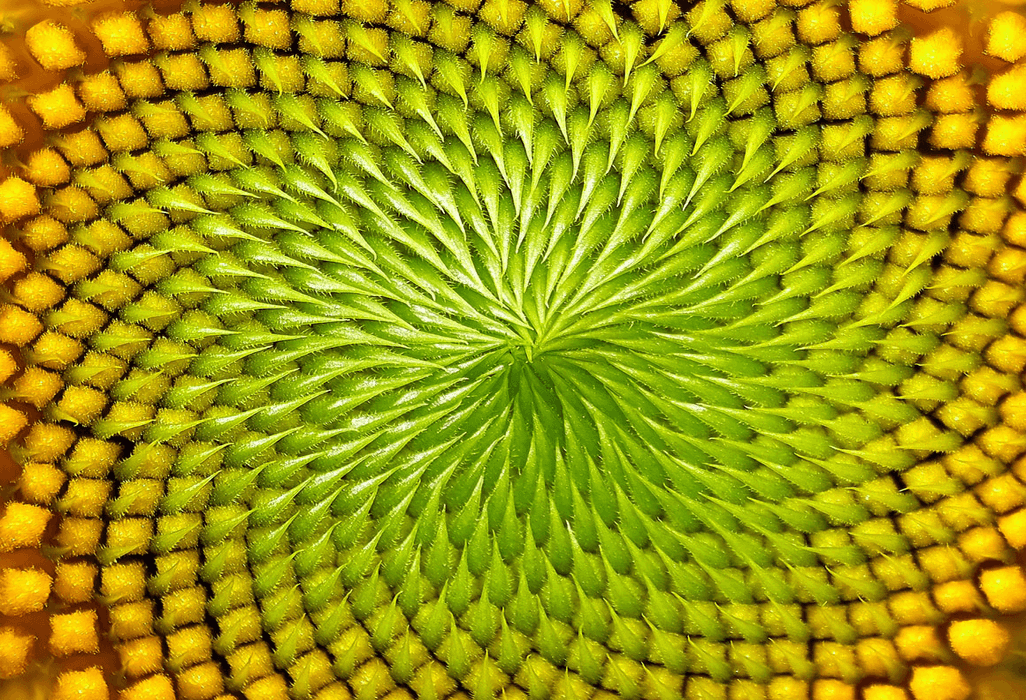Synergy with Cannabis and Other Herbs: Thinking Beyond Plant Constituents
By Sarah Russo
“We would argue that in the complex dance of ingenuity that is modern science, in the gaining of reliable knowledge, one should beware of the inherent weaknesses of the beautiful human mind.” -Hoffman et al. (1997)1
The depth of one plant is potentially limitless. Now magnify that by the vast expanse of the entire botanical kingdom, including those who have yet to be discovered. Factor in animal and environmental influences on our collective experience, and we are looking at an infinite exploration of the relationship between our planet and the botanical world.
The plant kingdom has the profound ability to heal many of our earthly ills and transform our lives. For example, 80% of people in Asia and Africa use herbal medicines.2 Around 18% of the population in the USA uses plant-based preparations to treat or prevent disease. Botanical remedies are even more prevalent in developing countries, where they often are relied upon as a primary source of healthcare.3
As an ongoing example of the microcosm as a reflection of the macrocosm, the concept of synergy can be found in countless examples of our inner and outer world. We can see synergy in the way that bees collect pollen from flowers to produce honey. They in turn spread the plant’s genetics far and wide. We see how two single household items like baking soda and vinegar act in a whole new way when combined together (i.e., you get that fizzy, chemical reaction). Synergy is also the impetus for our immunity and digestion. The beneficial bacteria in the gut offer immune support as they dine on unwanted microbes within our system.4 We couldn’t live without synergy. But we know relatively little about it.
Mosby’s Dictionary of Complementary and Alternative Medicine defines synergism as “the effect of combined components interacting to produce new and different effects than individual components, referring typically to the action of whole plants, as opposed to the active constituents in isolation”.2 This is also referred to as chemical synergy. There are many different types of synergistic actions happening in the plant world. We will explore some of them, discuss potential plant/plant dynamics, and also examine the healing properties of botanicals that science will never be able to fully elucidate.
More Complex Than Mere Plant Combinations
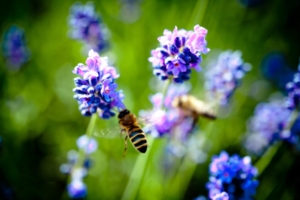 We still have a long way to go when it comes to unpacking botanical synergy and what it means. Understanding synergy in a deeper way could create novel therapies to combat an increasingly complex world of disease. Plant compounds offer a bounty of potential for healing the human body.3
We still have a long way to go when it comes to unpacking botanical synergy and what it means. Understanding synergy in a deeper way could create novel therapies to combat an increasingly complex world of disease. Plant compounds offer a bounty of potential for healing the human body.3
Despite the romantic notion that plants selflessly serve humanity, they have evolved their chemical constituents to ensure their own survival. Botanicals have a cunning ability to target pathogens by developing diverse constituents. This strategy protects against pests and builds resilience to environmental stressors. And these compounds produced by plants to ensure their perseverance also fights diseases affecting humans and other animals.3
Scientific discovery of plants often comes via dissection and reductionism. The production of innovative treatments often ignores the synergies that are naturally produced by plants. This seems counterintuitive, as the pharmaceutical industry is indebted to nature for providing a majority of medications that were derived from or inspired by it. Regulatory processes required to get a drug to market are based almost exclusively on single compound preparations.5 Researchers are well aware of the multicomponent nature of botanicals. However, even when investigation looks at botanical mixtures, it tends to distill it down to one or two “active compounds”.
Plant constituents in a broad sense provide overlapping and interrelated effects on the immune system, oxidative stress, hormone metabolism, gene expression, and antibacterial and antiviral action. Research indicates that plants provide the ability to modulate multiple enzymes of gene expression, and that botanical synergy could enhance pharmacodynamic activities.6 Cannabis is a prime example of a complex botanical with a multitude of compounds that act upon various receptors and molecular targets to offer a multifaceted approach to treating disease.7
In addition, there is the consideration of complexity. Oftentimes when examining a natural product, the particular phytoconstituents responsible for a specific action are not generally known. This gets even more complicated with the variability of botanical source material. How a plant is grown, processed, prepared, and stored can greatly affect the outcome of the constituents. For example, we know that old cannabis decreases in THC levels and turns into cannabinol (CBN) over time, producing a completely different cannabinoid.7 Because of this variance in how plants are harvested and stored, there is a lack of information about the quantity and specific concentration of what is being consumed.
Many researchers are working to improve the efficacy of natural product mixtures to help create a greater safety profile. They also aim to characterize and identify the compounds that contribute to biological activity.3 However, demonstrating evidence of synergistic activity demands time and money. And fully examining plant synergy is often cost prohibitive for many institutions.6
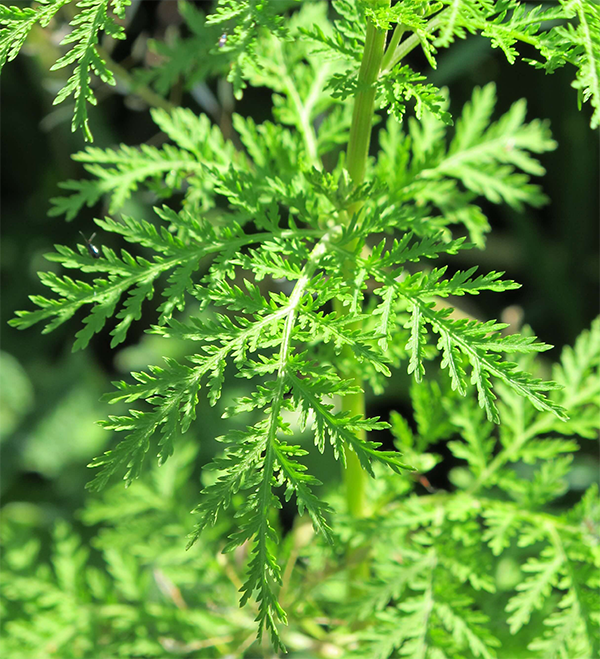
There is also the question of vested interest and deep pockets. Take for example, sweet wormwood (Artemisia annua). One of its compounds, artemisinin, has been shown to work as a synergistic treatment-resistant drug for malaria. Artemisia annua grows abundantly and is inexpensive to produce. The plant itself contains over 10 antiseptic and antimalarial compounds, some of which have demonstrated synergy with one another. Resistance to malaria is less likely to develop to its natural mix of plant compounds. A simple sweet wormwood tea could provide a more affordable and potentially safer preparation that would be less likely to lead to resistance. Clinical comparisons would be able to explore this topic in more depth. But there isn’t interest in furthering education on a humble plant for malaria when there is a multibillion pharmaceutical industry making money off its isolated compounds.6
Synergy is complex, but it is a fascinating world to explore. Even though we may not fully understand the medicinal potential of plant synergy, the complex pharmacological mixtures within plants may nonetheless have unique advantages. Botanical extracts have many active and inactive constituents which means there are ample opportunities for synergy.
Specific Types of Synergy and Their Advantages
Herbal formulas composed of many different botanicals are historically common. In Traditional Chinese Medicine (TCM) there aren’t many single plant preparations. A multi botanical approach is also strongly at play in Greek traditional medicine (theriacs) and Ayurveda from India. Early Arabic medicine often had a collection of around 30 plants.8,9,10,11 Modern studies have repeatedly found that active constituents of single plant species are not as effective as multiple formulations composed of various botanicals.12 This may be why certain cultures have historically employed holistic herbal formulations as opposed to single plant remedies. It has also been shown that human populations that consume a diet rich in plants view disease-prevention as a way of life.13
The way that plants act on multiple targets mirrors how the functions of the human body are modulated by a variety of systems. The gravitation towards multi-plant formulations is likely due to their diverse modes of activity. It has been suggested for example that “many genes might need complementary action to modify disease processes.”5,12 The ability to modulate a variety of areas within the body may provide unique assets in a clinical setting. Here are some ways that synergy functions within the body and botanicals of interest.
4 Kinds of Synergy and Botanical Examples
- Synergistic Multi-Target Effects: This is the most common type of botanical synergy. It refers to a plant extract or mixture that acts not only on an expected, singular target, but also on a multitude of other targets as well. These types of plants act on various receptors, enzymes, ion channels, metabolites, transporters, and others. Botanical examples of this include Cannabis spp, holy basil (Ocimum sanctum), and St. John’s wort (Hypericum perforatum).2,7
- Pharmacokinetic or Physicochemical Effect Modulation: Synergy may also impact the physicochemical properties of a plant mixture, such as increasing solubility. Altering the solubility of a preparation enhances bioavailability, making the medicine more effective. Botanical examples include Panax ginseng, flavonoids in Saint John’s Wort, and Grapefruit juice.2
- Interfering with Resistant Microorganisms: Synergy can be used to combat drug-resistant bacteria, fungi, or cancer cells. Natural derivatives may help mitigate the development of drug resistance and act synergistically in combination with antibiotics or cancer drugs. Botanical examples include seven commercially available terpenoids and the flavonoids quercetin, apigenin, naringenin. Rose geranium (Pelargonium graveolens) essential oil has also been found to combat microorganism resistance. Artemisinin (from the previously mentioned Artemisia annua) combined with other malaria drugs shows substantial synergic activity.2,6,14
- Eliminate or Neutralize Toxicity: Plant extracts may act to neutralize or remove the toxic effects of a drug, whether synthetic or not. Herbal preparations may also reduce or reverse adverse reactions by cushioning any potential toxicity a plant constituent may have. Some examples are silymarin, an active component found in milk thistle (Silybum marianum), glycyrrhizin from licorice (Glycyrrhiza glabra), and basil (Ocimum basilicum).2,12
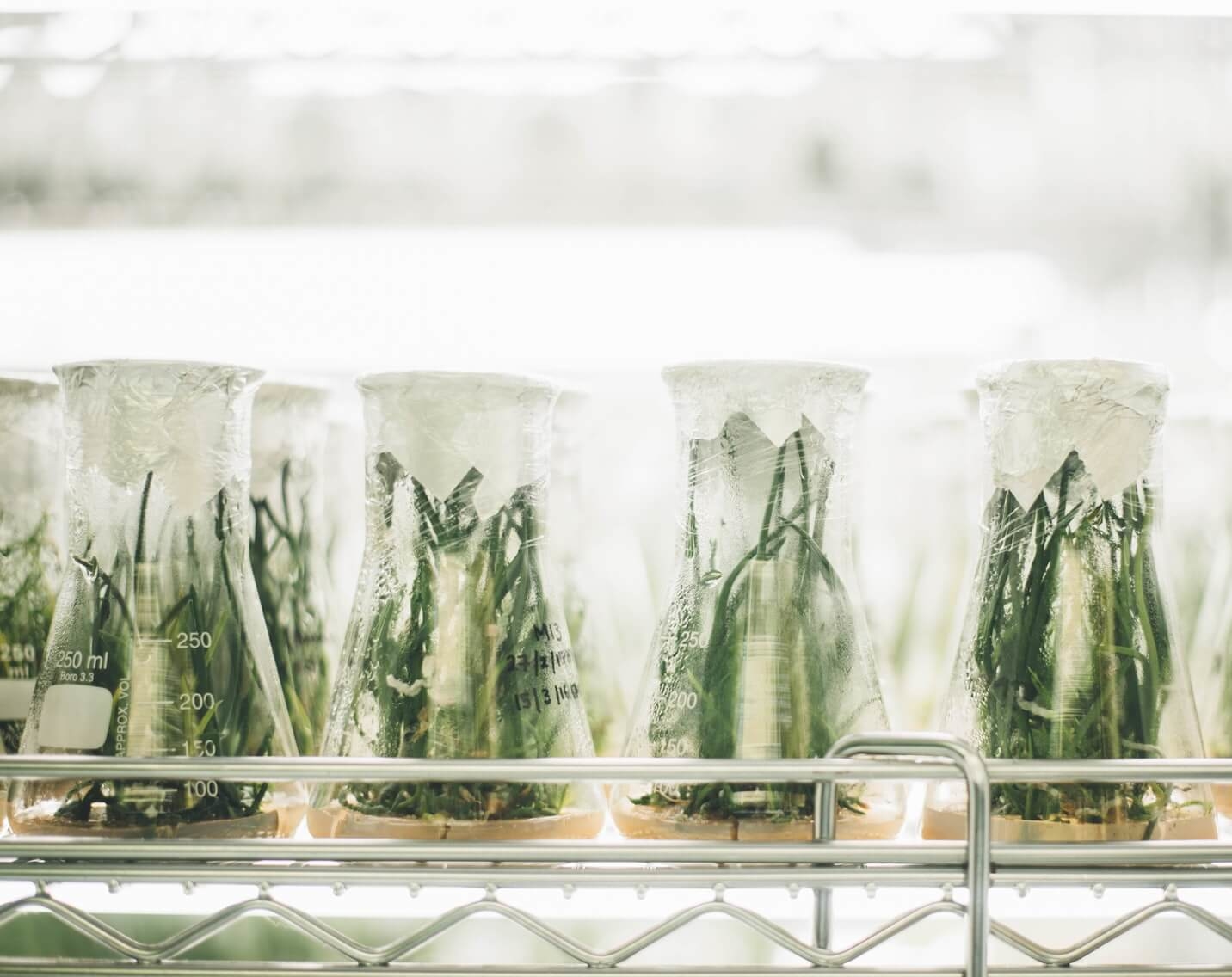 Scientific study generally looks at the whole effect of the botanical mixture in question without factoring in those components that are more pronounced or active.3 Kevin Spelman, PhD, a plant scientist, herbalist, and author of the course Cannabis Botany, Ecology & Phytochemistry describes the multitude of functions that plants provide. He explained that there are “non-active” phytoconstituents that may end up being important. For example, some components prevent the excretion of a particular compound so that it keeps circulating in your system. Dr. Spelman explained, “When we look at actives, we often find that they’re not very soluble in terms of going through membranes. So, the plant produces the secondary metabolites. They call them secondary because we’re not sure they do anything. But it turns out that a lot of these are actually super important to facilitate them passing through a plant’s membranes. If a plant couldn’t do that, it wouldn’t make it through evolution.”15
Scientific study generally looks at the whole effect of the botanical mixture in question without factoring in those components that are more pronounced or active.3 Kevin Spelman, PhD, a plant scientist, herbalist, and author of the course Cannabis Botany, Ecology & Phytochemistry describes the multitude of functions that plants provide. He explained that there are “non-active” phytoconstituents that may end up being important. For example, some components prevent the excretion of a particular compound so that it keeps circulating in your system. Dr. Spelman explained, “When we look at actives, we often find that they’re not very soluble in terms of going through membranes. So, the plant produces the secondary metabolites. They call them secondary because we’re not sure they do anything. But it turns out that a lot of these are actually super important to facilitate them passing through a plant’s membranes. If a plant couldn’t do that, it wouldn’t make it through evolution.”15
There is also clinical evidence that using multi plant preparations can help mitigate side effects and enable more effective dosing. Dr. Deborah Malka, author of the Dosage and Delivery of Cannabis Medicine course, mentioned that one of the keys to success in using cannabis consistently is to avoid saturation. She had integrated other botanicals in her clinical practice to decrease the amount of cannabis required for a particular patient, for example using ginger and cannabis for nausea. “One of the best ways to avoid saturation is to use another agent so that you can keep the cannabis at a lower dose” she said. “That’s why they make herbs in combination. Cannabis should be no exception.”16
Another known benefit of synergy is the reduction of side effects. Herbal synergy may offer an increased safety profile while potentiating the therapeutic properties. Herb/pharmaceutical drug interactions do exist, for example CBD dominant preparations act on CYP450 pathways which may amplify the power of antiepileptic drugs.17 However, plant compounds generally act as low affinity modulators to the body’s system, while single target drug preparations are generally high affinity.12 An example of this is the synthetic cannabinoids in Spice and “Special K” that strongly bind to CB1 receptors (causing a psychoactive effect) while whole plant cannabis extracts only modulate these receptors in a moderate way.18
Synergy on a Pharmacological Level: Botanicals in Terpenoid Teams & Endocannabinoid Interaction
If we want to examine specific compounds and/or mechanisms of action, the botanical world offers extensive avenues to explore. The “entourage effect” in cannabis and other herbs, where the combination of the plant’s compounds are greater when together than in isolation, is discussed on an ongoing basis. Scientific study continues to confirm this theory.7
It gets complicated when we consider multi plant formulas and how they may work together. Many plants share similar compounds or have comparable actions within the body. It is logical to think that because one botanical acts similarly as another, that using them together would create an even more profound union (for example, a cannabis and turmeric combination as a dynamic anti-inflammatory duo). While this follows some grounded logic, much of the science on plant/plant synergy is speculative. Let’s look at what science says about plant components shared by various botanicals and some potential opportunities of alignment.
Rosemary: Pain management & Antioxidant
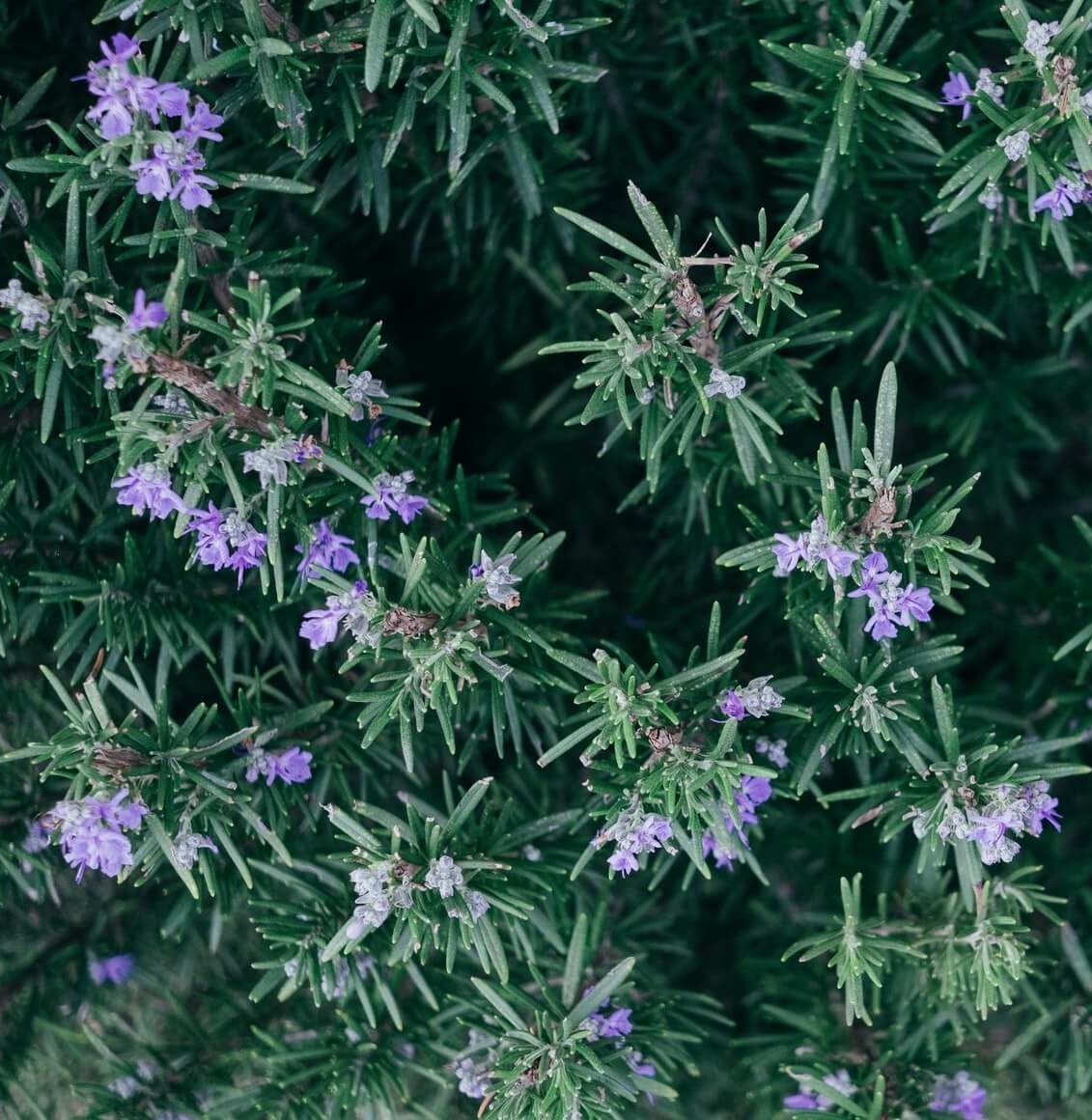 Myrcene (beta-myrcene) is the most prevalent terpenoid in cannabis varieties from Europe and the United States. It is also found in high concentrations in rosemary, Rosmarinus officinalis, with concentrations up to 52%. Myrcene is responsible for the “couch-lock” factor in cannabis that many people erroneously refer to as an “indica” type experience. Indica/sativa is a matter of taxonomy and morphology, not effect. Plant constituents and other factors contribute to how uplifting or sedative a particular cannabis variety will be.7,19
Myrcene (beta-myrcene) is the most prevalent terpenoid in cannabis varieties from Europe and the United States. It is also found in high concentrations in rosemary, Rosmarinus officinalis, with concentrations up to 52%. Myrcene is responsible for the “couch-lock” factor in cannabis that many people erroneously refer to as an “indica” type experience. Indica/sativa is a matter of taxonomy and morphology, not effect. Plant constituents and other factors contribute to how uplifting or sedative a particular cannabis variety will be.7,19
Myrcene has demonstrated analgesic (pain relieving) properties in various studies. Myrcene activates TRPV1 channels. TRPV1 are a group of receptor channels that are targets for reducing pain. Myrcene’s analgesic effect surpasses that of morphine, which typically lasts four hours. This supports an opioid-related mechanism of action.7,20 Based on this evidence, there is indication that botanicals rich in myrcene, like rosemary and certain cannabis chemovars, may be beneficial for pain management.
In addition, rosmarinic acid has shown potent antioxidant properties. Rosemary has the highest concentration of this compound currently uncovered in nature.6 Perhaps rosemary combined with cannabis would create a super antioxidant-rich, pain relieving preparation. Time may very well tell.
Copaiba: Nature’s most potent anti-inflammatory?
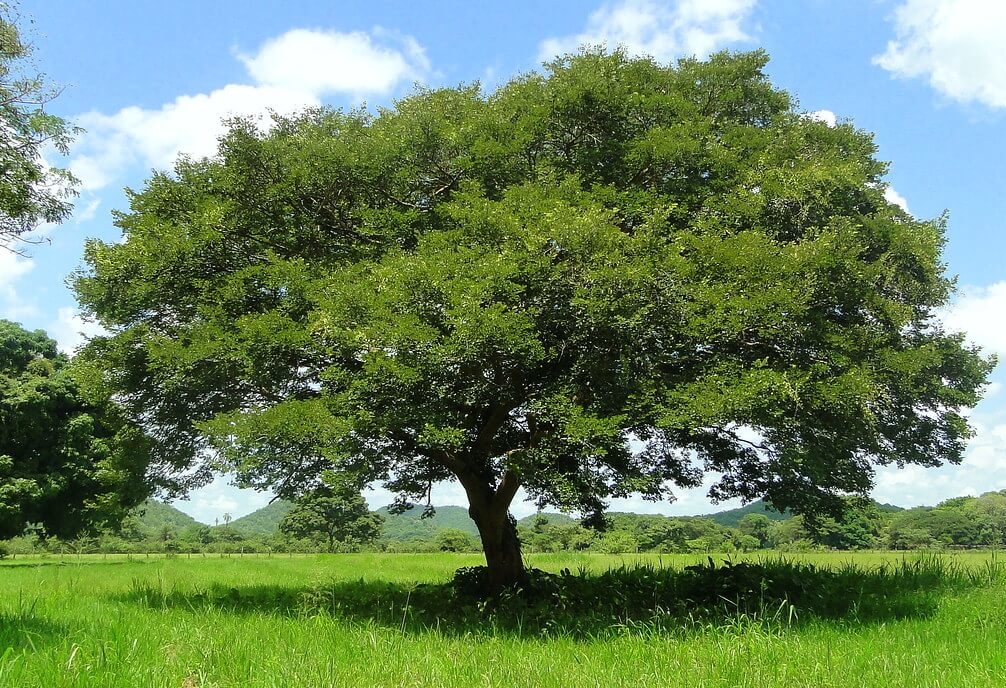 Copaiba (from the genus Copaifera) is a fundamental part of the plant medicine repertoire in the Amazon region of Brazil. Groups of people living in these regions noticed that animals rubbed themselves on copaiba tree trunks to heal their wounds. It has been used as an anti-inflammatory and vulnerary since the 16th century.21,22
Copaiba (from the genus Copaifera) is a fundamental part of the plant medicine repertoire in the Amazon region of Brazil. Groups of people living in these regions noticed that animals rubbed themselves on copaiba tree trunks to heal their wounds. It has been used as an anti-inflammatory and vulnerary since the 16th century.21,22
Copaiba has the highest known concentration of beta-caryophyllene (BC), which can attain a concentration of 50%. BC is another terpene that is shared by cannabis. It grants black pepper its distinctive flavor kick. You can also find it in hops and cloves. Plants rich in BC have been found to reduce inflammation, combat pain, and heal wounds both internally and externally.19,23
BC was the first non-cannabis compound discovered to activate cannabinoid receptors. It binds to CB2 receptors but not CB1. CB2 receptors modulate the inflammatory response within the body without causing psychoactive effects. CB2 antagonists have been investigated as potential therapies to manage inflammation and chronic pain, as well as combat addiction. It is believed that CB2 activation is responsible for the analgesic properties of BC. It therefore makes sense to explore BC-dominant plants as novel therapies for pain and inflammation. At the time of this writing the studies on copaiba have been done in mouse studies and there haven’t been any research on its use in combination with cannabis or other plant medicines.7,24
Milk Thistle
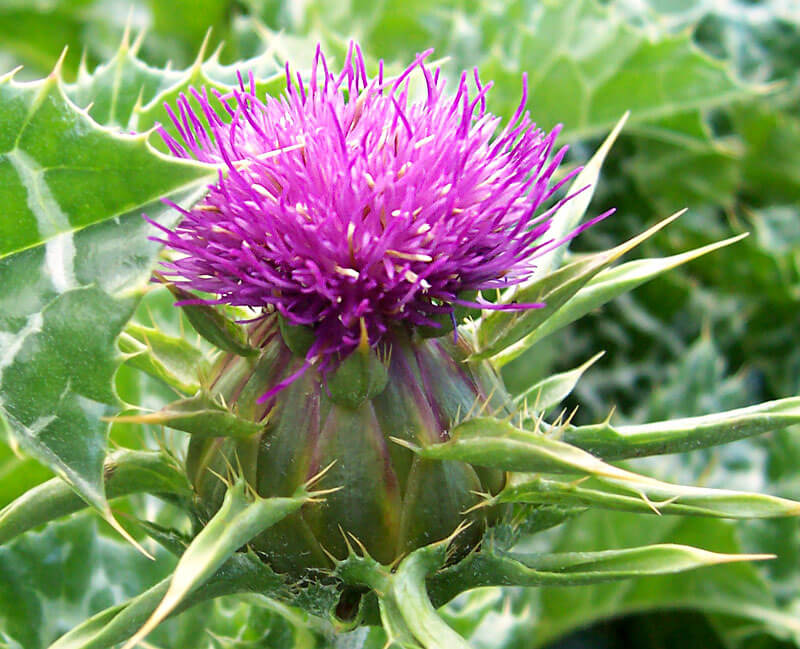 Milk thistle, Silybum marianum, is an herb well known for its liver protective properties. Numerous clinical studies have demonstrated positive effects for patients with hepatic disease. Researchers continue to discover ways that milk thistle is able to improve liver function and mitigate toxic overload. A compound in the plant, silymarin, stimulates the synthesis of liver-protective bile salts and prevents toxins from infiltrating and damaging liver cells. Silymarin also increases the body’s production of glutathione, a super-antioxidant that is crucial for liver detoxification.25
Milk thistle, Silybum marianum, is an herb well known for its liver protective properties. Numerous clinical studies have demonstrated positive effects for patients with hepatic disease. Researchers continue to discover ways that milk thistle is able to improve liver function and mitigate toxic overload. A compound in the plant, silymarin, stimulates the synthesis of liver-protective bile salts and prevents toxins from infiltrating and damaging liver cells. Silymarin also increases the body’s production of glutathione, a super-antioxidant that is crucial for liver detoxification.25
A pivotal Egyptian 2016 study examined silymarin’s mechanism of action on liver fibrosis in rats. Both CB1 and CB2 receptors are expressed in the liver. Silymarin was found to block CB1 while turning on CB2, which is a great combination for treating liver disease. This is because the activation of CB1 may produce pro-fibrogenic effects, whereas activating CB2 reduces fibrosis (the opposite effect). It was concluded that silymarin may display its anti-fibrogenic action by modulating cannabinoid receptor activity in the liver.26,27 A 2020 study followed up on that and found silymarin’s mechanism of action activated CB2 which suppresses liver fibrosis. This encourages liver regeneration and mitigates injury by decreasing inflammatory markers.28
In addition, the cannabinoid THCV (tetrahydrocannabivarin) also blocks CB1 through neutral antagonism, and activates CB2. Cannabis dominant in THCV may benefit those with liver diseases as the cannabinoid works through similar methods as milk thistle. In fact, pharmaceutical companies are working to develop receptor-selective drugs that mimic the actions of silymarin and THCV on CB1 and CB2 receptors. Other therapeutic components in cannabis such as THC, CBD and caryophyllene may be beneficial for hepatic disease.29
These botanicals may offer some potential synergies due to their interaction with the endocannabinoid system or by mimicking similar effects to cannabis. As mentioned, there have been little to no research conducted on specific herb/herb synergy, due to the complexity of plant constituents and a lack of funding support. Yet some multi-herb preparations are gaining interest in the scientific landscape. A tried-and-true herbal medicine formulation, known as “Free and Easy Wanderer”, has been used for hundreds of years in China. It is now being investigated as an herbal treatment for PTSD and depression.30 Since people have been using herbal medicine blends and finding results long before science has validated their benefits, research should play catch up.
That Which is Beyond Comprehension: What Else in Plants Heal?
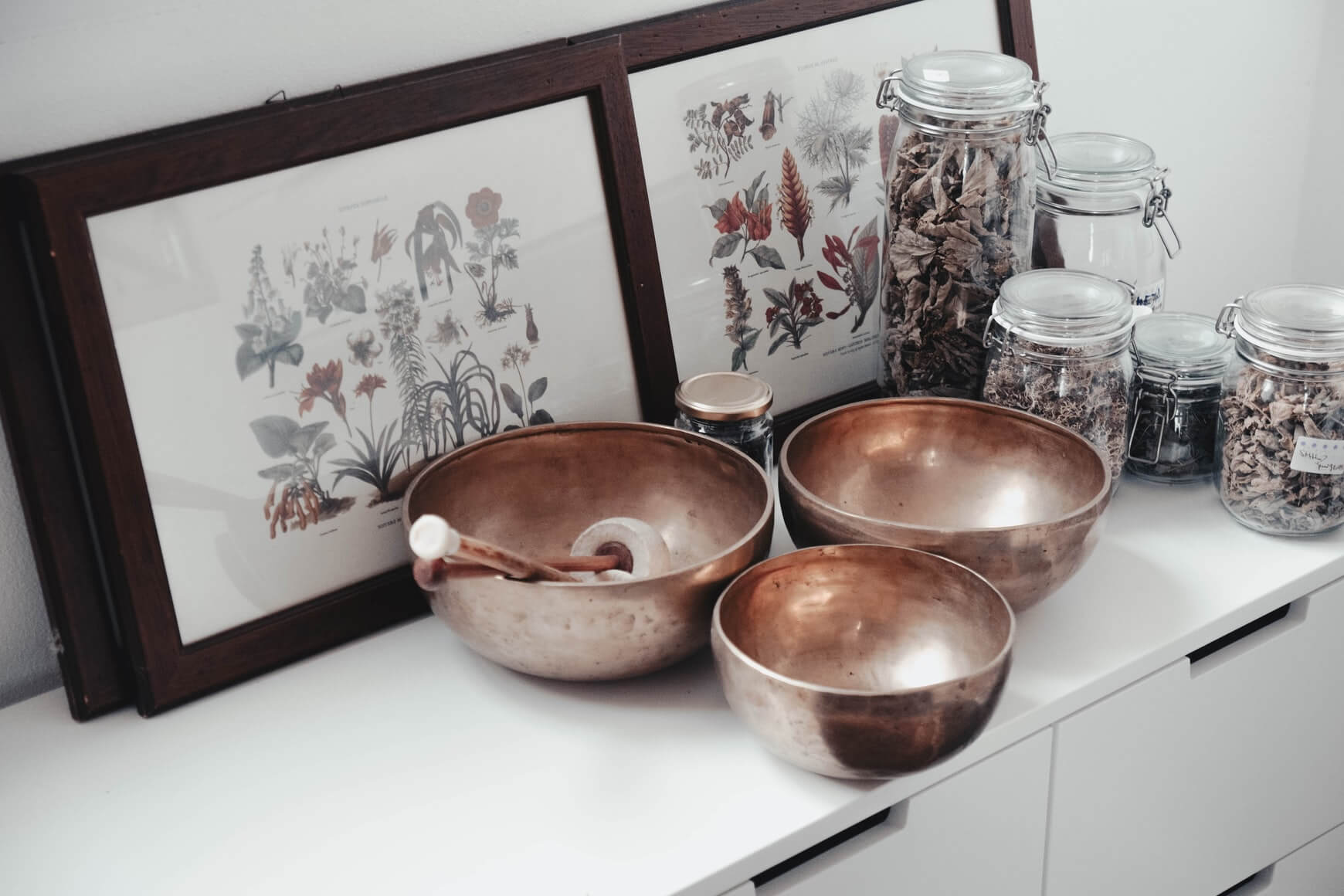 At last, we arrive at some of plants’ greatest mystery; those aspects that we have yet to understand. A large question remains: what beyond botanical constituents account for their healing prowess? Trying to define the undefinable has long been a human characteristic in the plant world. Some practices have surrendered to the unknown. The term prabha in Ayurvedic medicine is reserved for such instances, which means “that which is beyond comprehension”.15 We can research plants while at the same time accepting parts of their healing may remain outside our realm of understanding.
At last, we arrive at some of plants’ greatest mystery; those aspects that we have yet to understand. A large question remains: what beyond botanical constituents account for their healing prowess? Trying to define the undefinable has long been a human characteristic in the plant world. Some practices have surrendered to the unknown. The term prabha in Ayurvedic medicine is reserved for such instances, which means “that which is beyond comprehension”.15 We can research plants while at the same time accepting parts of their healing may remain outside our realm of understanding.
Synergy can also consider the energetic vibrational aspects of plants. Western herbalism often uses the map of herbal energetics to categorize the actions that a given botanical has. Energetics guide herbalists in choosing remedies for a given patient and their unique situation.31 For example, cannabis is a warming and drying herb, according to the Western herbalist tradition. It has antimicrobial, anti-inflammatory, immunomodulatory, antidepressant, and analgesic properties. It is an adaptogen, meaning it can help build the body’s resistance to stressors of all kinds.32 Yet it defies human created constructs of categorization. It does all of this and more. Plants often break out of the boxes we try to put them in, both literally and figuratively.
Dr. Malka comments that cannabis is not just terpenes, flavonoids, and other constituents, “There’s lifeforce.” She describes the four layers of activity in the cannabis plant. The first is the Cannabinoid Layer, the second the Terpene Layer, and third is the Entourage Layer. The Entourage Layer is where different components in cannabis such as the cannabinoids and terpenes interact. Her new book Medicinal Cannabis: Pearls for Clinical Practice breaks down these topics in greater depth. The fourth and final layer is what she calls the plant’s “vital force”. Dr. Malka says, “Hardly anyone ever talks about that. But I think it’s really important to remember that we’re dealing with a live botanical.”16
Some healers and keepers of ancient plant wisdom view the importance of health as an aligning of the mind, body, and spirit. Many cultures employing multi plant formulations also integrate the idea of healing beyond mere symptoms and physical maladies.33 There is a long-rooted essence of the human/plant relationship that enables greater healing to happen. For example, if someone using cannabis is able to work with the plant itself, this may provide a deeper connection to their medicine and to nature. Dustin Sulak, DO has spoken to this idea, stating, “Essentially, it’s an exchange. People can allow the spirit of cannabis to enter their body and live through them, and know that it might change them.”34 It has also been noted that a plant’s alignment with a given person for a specific purpose is an energetic exchange between human and botanical.
Healers in various cultures may call on the plants themselves to offer guidance on how they should be used. That idea may feel unfounded for some, but the concept has humbled even the most well studied plant experts. Kevin Spelman, PhD, host of The Spelman Report, describes a particular experience he had in Oaxaca, Mexico many decades ago. He was at a ceremony with a local group from the region. Participants huddled together in a hut with a fire in the middle. The facilitator of the ceremony was a medicine man (shaman), known as an adivino. Dr. Spelman described he saw the adivino perform many tasks for the community, acting as a marriage counselor and even an exorcist. During the ceremony, the adivino turned to Spelman and said, “You know many, many things about plants”. When telling this tale, Spelman shared, “He didn’t know me from Adam. But he went on to ask me, ‘Do you know how we learn about plants? The plants tell us how to use them.’” At that point Spelman explained, “I felt about 15 years of study just drain out my feet.”15
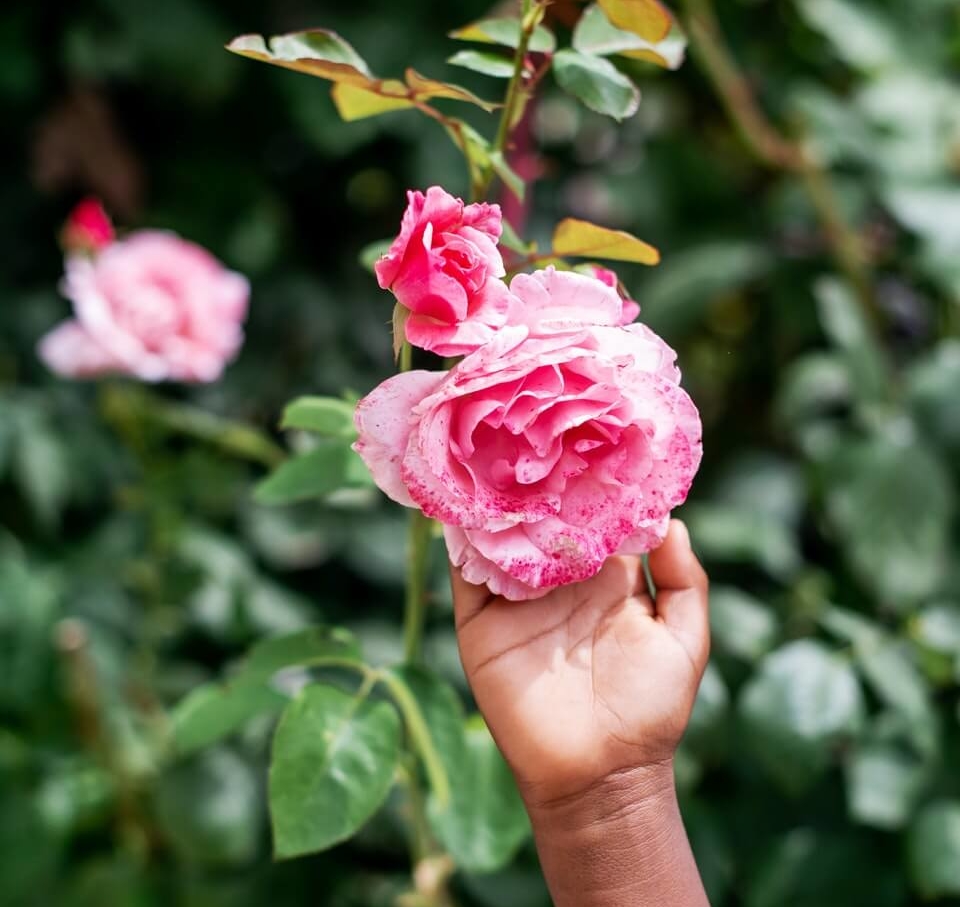 Across the world, people have used botanicals for thousands of years as an integral part of their life. Their beliefs and practices can at times defy the research protocols and concept of healing in the scientifically-driven world. Dr. Yesid Ramirez, a Colombian biochemist working at the University of Würzburg in Germany, has been using his scientific background to help bridge the gap between the laboratory and indigenous plant knowledge. He has commented on the vast amount of insight the indigenous communities bring to the field of plant science. “Medicine originated through the relationship of humans with nature…Indigenous communities still have a connection to nature because it is their way of life. They may not have the knowledge of pharmacology and interactions with receptors and enzymes, but they know what plants to put together in order to have a therapeutic effect. We should acknowledge that.”35 Science and traditional plant medicine knowledge are not mutually exclusive. In fact, they can complement each other. Applying empirical knowledge can bring a new perspective to the field of science and a deeper understanding of how plants heal.
Across the world, people have used botanicals for thousands of years as an integral part of their life. Their beliefs and practices can at times defy the research protocols and concept of healing in the scientifically-driven world. Dr. Yesid Ramirez, a Colombian biochemist working at the University of Würzburg in Germany, has been using his scientific background to help bridge the gap between the laboratory and indigenous plant knowledge. He has commented on the vast amount of insight the indigenous communities bring to the field of plant science. “Medicine originated through the relationship of humans with nature…Indigenous communities still have a connection to nature because it is their way of life. They may not have the knowledge of pharmacology and interactions with receptors and enzymes, but they know what plants to put together in order to have a therapeutic effect. We should acknowledge that.”35 Science and traditional plant medicine knowledge are not mutually exclusive. In fact, they can complement each other. Applying empirical knowledge can bring a new perspective to the field of science and a deeper understanding of how plants heal.
Yet botanical research may always leave something to be desired. Doctors Spelman and Malka have described certain aspects of botanicals that science will be unable to address. Dr. Malka believes that the vital force and plant consciousness will be forever beyond scientific understanding. She also expressed the importance of a patient’s belief system as an integral part of the healing process. She mentioned that when patients believe in the botanical remedy they are using, it amplifies their ability to heal.16
Kevin Spelman shares that another fundamental aspect of healing is the ability to shift your perspective and/or enter into a higher state of consciousness. He explains that there are many states of mind that can be inhabited to to tune us in to what’s going on around us. He gives the example of entheogens that “can make us aware of options that we couldn’t see before.”15 There is also the vast importance of the connection to something greater than ourselves. Using plant medicine enables us to form a direct connection with the planet and to tap into greater possibilities in the world around us.
Plants have evolved with humans for as long as we’ve roamed the earth. The exploration of the plant world is infinite. Let’s celebrate the wonder of their mystery and mastery. We can break down complexities into bits that enable us to better understand and help the collective reality. But ideally we would take a more holistic approach and even let go and surrender to the unknown. May a greater understanding in the scientific community catalyze our connection to our inner and outer world. It seems as good a time as ever. It shall be no secret that the future is polybotanical.
 Sarah Russo is a freelance writer, organizer, consultant, and digital creative with over 13 years of experience in the cannabis and herbal medicine space. She got her degree in Environmental Studies and Social Justice, with a focus on botanical medicine from the Evergreen State College. She is the founder of Herbs for the Apocalypse, a graphic novel and passion project aimed at deepening our connection to plant medicine and forging resistance and resilience in trying times.
Sarah Russo is a freelance writer, organizer, consultant, and digital creative with over 13 years of experience in the cannabis and herbal medicine space. She got her degree in Environmental Studies and Social Justice, with a focus on botanical medicine from the Evergreen State College. She is the founder of Herbs for the Apocalypse, a graphic novel and passion project aimed at deepening our connection to plant medicine and forging resistance and resilience in trying times.
Further Reading
- Combining Cannabis With Other Herbs
- Cannabis Consciousness, Alternative Healing, and the Medicine of Psychoactivity
- Cannabis as a Multifaceted Treatment Approach to Alzheimer’s Disease
References
- Hoffmann R, Minkin VI, Carpenter BK. Ockham’s razor and chemistry. International Journal for the Philosophy of Chemistry. 1997;3:3-28.
- Pezzani R, Salehi B, Vitalini S, Iriti M, Zuñiga FA, Sharifi-Rad J, Martorell M, Martins N. Synergistic Effects of Plant Derivatives and Conventional Chemotherapeutic Agents: An Update on the Cancer Perspective. Medicina (Kaunas). 2019 Apr 17;55(4):110.
- Caesar LK, Cech NB. Synergy and antagonism in natural product extracts: when 1+ 1 does not equal 2. Natural product reports. 2019;36(6):869-88.
- Gaia Herbs. (2015). What is Synergy – and Why It Matters. Accessed on 12/17/2021
- Boik J, Kirakosyan A, Kaufman PB, Seymour EM, Spelman K. Interactions of bioactive plant metabolites: Synergism, antagonism, and additivity. InRecent Advances in Plant Biotechnology 2009 (pp. 213-230). Springer, Boston, MA.
- Spelman K, Duke JA, Bogenschutz-Godwin MJ. The synergy principle at work with plants, pathogens, insects, herbivores, and humans. Natural Products from Plants. 2nd ed. CRC Taylor & Francis. Boca Raton. 2006:475-501.
- Russo EB, Marcu J. Cannabis pharmacology: the usual suspects and a few promising leads. Advances in pharmacology. 2017 Jan 1;80:67-134.
- Russo EB. History of cannabis and its preparations in saga, science, and sobriquet. Chemistry & biodiversity. 2007 Aug;4(8):1614-48.
- Varisco DM, Kahl O. Sābūr Ibn Sahl, Dispensatorium Parvum (al-Aqrābādhīn al-Saghīr) Sabur Ibn Sahl, Dispensatorium Parvum. Journal of the American Oriental Society. 1996;116(1).
- Smith FP, Stuart GA. Chinese materia medica: Vegetable kingdom. American Presbyterian Mission Press; 1911.
- Stuart GA. Chinese Materia Medica—Vegetable Kingdom. Shanghai: American Presbyterian Mis.
- Burns JJ, Zhao L, Taylor EW, Spelman K. The influence of traditional herbal formulas on cytokine activity. Toxicology. 2010 Nov 28;278(1):140-59.
- Liu RH. Health benefits of fruit and vegetables are from additive and synergistic combinations of phytochemicals. The American journal of clinical nutrition. 2003 Sep 1;78(3):517S-20S.
- Yoshida N, Takada T, Yamamura Y, Adachi I, Suzuki H, Kawakami J. Inhibitory effects of terpenoids on multidrug resistance-associated protein 2-and breast cancer resistance protein-mediated transport. Drug metabolism and disposition. 2008 Jul 1;36(7):1206-11.
- Spelman, Kevin. Interview on Plant Synergy; Online. Conducted 12/13/2021
- Malka, Deborah. Interview on Plant Synergy; Online. Conducted 12/09/2021
- Devitt-Lee, Adrian (2018). CBD Drug Interactions: What You Need to Know. Accessed on 12/20/2021
- Gerdeman, Greg. (2016). A Neuroscientist critiques New York Times report on synthetic “spice” cannabinoid. Accessed on 12/20/2021
- Spelman, Kevin. (2020). Cannabis Botany, Ecology & Phytochemistry. Society of Cannabis Clinicians Clinical Training Curriculum.
- Do Vale, T. G., Furtado, E. C., Santos Jr, J. G., & Viana, G. S. B. (2002). Central effects of citral, myrcene and limonene, constituents of essential oil chemotypes from Lippia alba (Mill.) NE Brown. Phytomedicine, 9(8), 709-714.
- de Albuquerque KC, da Veiga AD, Silva JV, Brigido HP, Ferreira EP, Costa EV, Marinho AM, Percário S, Dolabela MF. Brazilian Amazon Traditional Medicine and the Treatment of Difficult to Heal Leishmaniasis Wounds with Copaifera. Evid Based Complement Alternat Med. 2017;2017:8350320.
- Do Salvador V, de Abreu JC. História do Brasil. Comp. Melhoramentos de S. Paulo; 1931.
- Koyama, S., Purk, A., Kaur, M., Soini, H. A., Novotny, M. V., Davis, K., … & Mescher, A. (2019). Beta-caryophyllene enhances wound healing through multiple routes. PloS one, 14(12), e0216104.
- Ehrhart, J., Obregon, D., Mori, T., Hou, H., Sun, N., Bai, Y., … & Shytle, R. D. (2005). Stimulation of cannabinoid receptor 2 (CB 2) suppresses microglial activation. Journal of neuroinflammation, 2(1), 1-13.
- Kalantari H, Shahshahan Z, Hejazi SM, Ghafghazi T, Sebghatolahi V. Effects of silybum marianum on patients with chronic hepatitis C. J Res Med Sci. 2011 Mar;16(3):287-90.
- El Swefy S, Hasan RA, Ibrahim A, Mahmoud MF. Curcumin and hemopressin treatment attenuates cholestasis-induced liver fibrosis in rats: role of CB1 receptors. Naunyn-Schmiedeberg’s archives of pharmacology. 2016 Jan 1;389(1):103-16.
- Russo, Sarah. (2017). Weed Power: Milk Thistle, Liver Disease & the Endocannabinoid System. Project CBD. Accessed on 12/20/2021
- Ali AM, El-Tawil OS, El-Rahman SS. Inhibited TLR-4/NF-κB pathway mediated by cannabinoid receptor 2 activation curbs ongoing liver fibrosis in bile duct ligated rats. Adv. Anim. Vet. Sci. 2021;9(2):253-64.
- Russo, E. B., (2014) Cannabinoids and the Liver, presentation at Swedish Hospital, Seattle, WA.
- Hong C, Cao J, Wu CF, Kadioglu O, Schüffler A, Kauhl U, Klauck SM, Opatz T, Thines E, Paul NW, Efferth T. The Chinese herbal formula Free and Easy Wanderer ameliorates oxidative stress through KEAP1-NRF2/HO-1 pathway. Sci Rep. 2017 Sep 14;7(1):11551.
- de la Forêt, Rosalee. (2017). Herbal Energetics. Herbs with Rosalee. Accessed on 12/20/2021
- Brent, James. (2020). Combining Cannabis With Other Herbs. Society of Cannabis Clinicians. Accessed on 12/20/2021
- Beri K. A future perspective for regenerative medicine: understanding the concept of vibrational medicine. Future Sci OA. 2018 Jan 5;4(3):FSO274.
- Russo, Sarah. (2021). Dr. Dustin Sulak on Cannabis Consciousness, Alternative Healing, and the Medicine of Psychoactivity. – Society of Cannabis Clinicians. Accessed on 12/20/2021
- Russo, Sarah. (2021). Indigenous Empirical Plant Knowledge Meets Cannabis Science. Society of Cannabis Clinicians. Accessed on 12/20/2021

